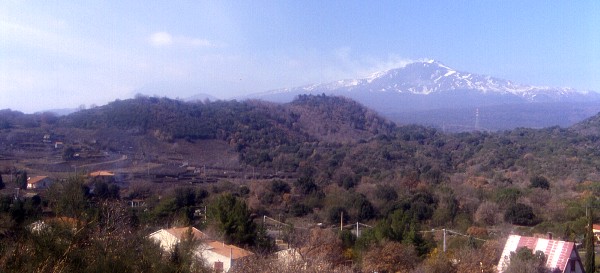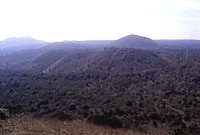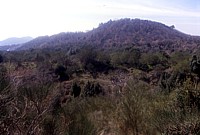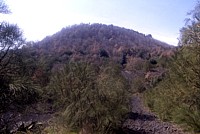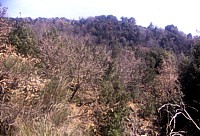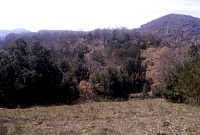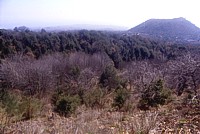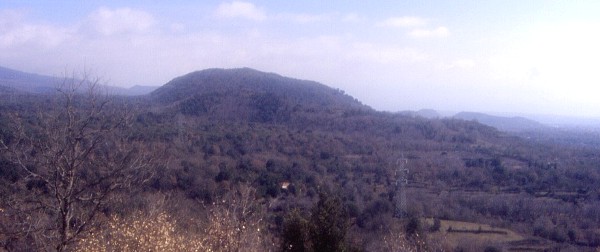| Etna
index |
||
| Geology | Geological history | Cones and craters |
| Eruptive characteristics | Eruptions before 1971 | Eruptions since 1971 |
| Etna and Man | References | Web sites |
| Weather forecasts | FAQ | Latest news |
Mamma
Etna's countless children
Monte Gervasi
S flank, 15.029772° E, 37.642233° N
Summit elevation: 986 m
![]()
Monte
Gervasi is a quite unconspicuous cone when compared to its much larger
and beautifully shaped neighbors such as Monte
Arso, Mompeloso, and Monte
Serra Pizzuta. It is actually little more than the eastern rim of
a large and relatively flat crater, and a smaller horseshoe-shaped cone
lies immediately to the south, probably formed during the same eruption.
To the north, east and west Monte Gervasi is surrounded by thick lobes
of lava erupted during the 1634-1638 eruption, so that its relative height
has probably been much reduced. It is densely forested, so that its morphology
can be better evaluated from topographic maps and aerial views than on
the ground. The original width of the main crater of Monte Gervasi is
difficult to assess, because its western part has been invaded by a thick
lobe of 1634-1638 lava, but probably was on the order of 350-400 m, unusually
large for an Etnean flank crater. The smaller crater on the south side
of the cone is 130 x 200 m in diameter and much better preserved. Besides
all that, Monte Gervasi appears to be the youngest cone (except for the
Monti Rossi, which formed in 1669) in the pyroclastic cone field north
of Nicolosi - although it should be noted that nearby Monte
Arso appears still more youthful and bears less vegetation, but no
absolute or relative age determinations are available for this cone. A
tephrochronological study carried out by Del Carlo and Branca (1998) has
shown that the eruption of Monte Gervasi postdates that of Mompeloso,
approximately 1.2 km to the SSE, which probably occurred in or around
A.D. 252. Lava flows produced by this eruption advanced into the direction
of Nicolosi, but much of them seems to have been covered with tephra from
the nearby 1669 eruption, which ranks as the most explosive flank eruption
of Etna of the past 400 years.
The main crater of Monte Gervasi is crisscrossed by dirt roads and footpaths
and appears to be a popular cross-driving area, but offers little of geological
interest. The smaller southern crater can be reached by a footpath; fruit
gardens and vineyards lie on its southern side.
I first visited Monte Gervasi on 15 April 2000, without taking photographs,
and returned on 13 March 2004, when all photographs on this page were
taken.
Copyright © Boris Behncke, "Italy's Volcanoes: The Cradle of Volcanology"
Page set up on 15 March 2004, last modified on 21 March 2004

